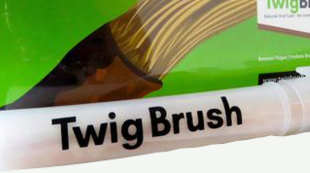
Submitted questions will be posted with my response by the following Tuesday or before.
Submitted comments will be moderated and approved within 24 hours.
CDC Issues New Warning: No Safe Blood Level for Lead
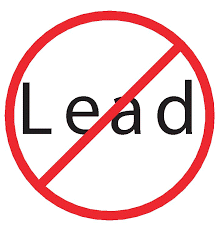
In January, the Centers for Disease Control (CDC) issued a new Fact Sheet for Blood Lead Levels in Children.
The Fact Sheet says:
Protecting children from exposure to lead is important to lifelong good health. Even low levels of lead in blood have been shown to affect IQ, ability to pay attention, and academic achievement. And effects of lead exposure cannot be corrected.
The most important step parents, doctors, and others can take is to prevent lead exposure before it occurs.
On the CDC website they say, ” No safe blood lead level in children has been identified.”
The Fact Sheet gives tips for parents on how they can protect their children from exposures to lead.
Microban Exposure From Breathing?
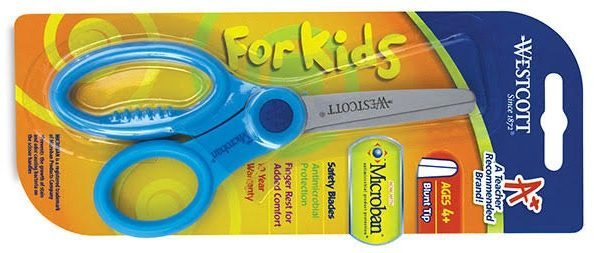 Microban is now on all kinds of products kids and adults are touching every day.
Microban is now on all kinds of products kids and adults are touching every day.
Question from Mary
Hi Debra,
My assistant just bought a floor pad for me that says “microban” on the label.
I know that microban is an antimicrobial, but since it will be 5 feet from my nose, I don’t suppose there is a need to be concerned about toxicity. However, if it wears away like my old pads do we’ll be tracking the dust onto the living room carpet. But then I don’t sit on the floor so maybe that’s not an issue either. I would not buy a Rubbermaid dish drainer because it has microban, but this is different.
In terms of the microban, do you think it is risky to have these pads on the kitchen floor?
Thanks for your input.
Debra’s Answer
This is a very good question.
I had to look this one up because exposures can happen through breathing, eating or drinking, or skin contact. And certainly if microban requires skin contact for it to get into your body, breathing it wouldn’t be an issue. Like stainless steel, for example. Perfectly fine to breathe, but it will release heavy metals into food or water.
Microban is a trade name for the chemical triclosan, so I looked up triclosan.
The primary route of entry is through the skin from personal care products and ingestion from dental care products.
Warnings from various manufacturers are limited to “skin irritation” and “serious eye irritation.”
I found an MSDS that says that inhalation is not a route of entry for triclosan in an antibacterial soap.
So this is beginning to sound like there isn’t much exposure to triclosan found on flooring pads.
How Antibiotics and Antibacterials are Compromising our Health
 My guest today is Martin J. Blaser, MD, author of Missing Microbes: How the Overuse of Antibiotics Is Fueling Our Modern Plagues. We’ll be talking about how the massive increases in the developed world of “modern plagues”—such as obesity, type 1 diabetes, asthma, allergies, esophageal cancer, celiac disease, Crohn’s disease, ulcerative colitis, and autism—are related to loss of diversity of the complex—and crucially important—ecosystem of microorganisms within our bodies on which we all depend. As diversity diminishes, our immune systems are compromised, and we become much more susceptible to new infections. And this loss of micro-organism diversity is due to the use of wide use of antibiotics and products that contain antibacterials such as triclosan.
My guest today is Martin J. Blaser, MD, author of Missing Microbes: How the Overuse of Antibiotics Is Fueling Our Modern Plagues. We’ll be talking about how the massive increases in the developed world of “modern plagues”—such as obesity, type 1 diabetes, asthma, allergies, esophageal cancer, celiac disease, Crohn’s disease, ulcerative colitis, and autism—are related to loss of diversity of the complex—and crucially important—ecosystem of microorganisms within our bodies on which we all depend. As diversity diminishes, our immune systems are compromised, and we become much more susceptible to new infections. And this loss of micro-organism diversity is due to the use of wide use of antibiotics and products that contain antibacterials such as triclosan. 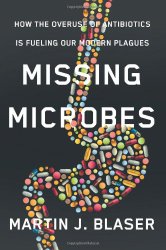 Dr. Blaser has studied the role of bacteria in human disease for more than thirty years. He is the director of the Human Microbiome Program at New York University, the former president of the Infectious Diseases Society of America, and has held major advisory roles at the National Institutes of Health. He cofounded the Bellevue Literary Review, and his work has been written about in many newspapers and journals, including The New Yorker, Nature, The New York Times, The Washington Post, and The Wall Street Journal. He lives in New York City. www.martinblaser.com.
Dr. Blaser has studied the role of bacteria in human disease for more than thirty years. He is the director of the Human Microbiome Program at New York University, the former president of the Infectious Diseases Society of America, and has held major advisory roles at the National Institutes of Health. He cofounded the Bellevue Literary Review, and his work has been written about in many newspapers and journals, including The New Yorker, Nature, The New York Times, The Washington Post, and The Wall Street Journal. He lives in New York City. www.martinblaser.com.
The Dangers of Antimicrobials and How to Choose Products Without Them
 My guest today is Larry Plesent, Founder of Vermont Soap. We’re going to talk about why you shouldn’t use toxic antimicrobials, which products contain them and where you can find antimicrobial-free alternatives, and some toxic free ways to kill germs. Vermont Soap makes “100% natural and non-toxic alternatives to the chemical based personal care products now in general use, including; handmade bar soaps for sensitive skin, anti-aging products, 100% natural shower gels, castile liquid soaps and non-toxic cleaners. Most products made by Vermont Soap are certified to USDA organic standards.” Larry is also a writer,philosopher, restaurateur and farmer. www.debralynndadd.com/debras-list/vermont-soap
My guest today is Larry Plesent, Founder of Vermont Soap. We’re going to talk about why you shouldn’t use toxic antimicrobials, which products contain them and where you can find antimicrobial-free alternatives, and some toxic free ways to kill germs. Vermont Soap makes “100% natural and non-toxic alternatives to the chemical based personal care products now in general use, including; handmade bar soaps for sensitive skin, anti-aging products, 100% natural shower gels, castile liquid soaps and non-toxic cleaners. Most products made by Vermont Soap are certified to USDA organic standards.” Larry is also a writer,philosopher, restaurateur and farmer. www.debralynndadd.com/debras-list/vermont-soap
Nontoxic Hard Case for Glasses and Sunglasses?
Question from Rebecca
Hi Debra,
Do you have any suggestions on hard cases for glasses that are non-toxic?
The case I have for my sunglasses smells like it is off gassing possibly formaldehyde (from glues?). I can smell it on the plastic frames when I put them on my face. Ugh.
Any good suggestions for hard case?
Debra’s Answer
I don’t have a suggestion because I don’t use a hard case for my glasses. I’m usually wearing them or they are on top of my head.
I haven’t even looked at hard cases for years.
Readers, any suggestions?
POLL: Californians Overwhelmingly Support Right to Know Legislation for Cleaning Product Ingredients

Proposals in Cleaning Product Right to Know Act (Senate Bill 258) enjoy strong bipartisan support
SACRAMENTO, CA – A new poll shows California voters overwhelmingly support legislation to require ingredient labeling on cleaning products sold in the state. Sen. Ricardo Lara (D-Bell Gardens) introduced the Cleaning Product Right to Know Act of 2017 (Senate Bill 258) to require detailed ingredient labels on cleaning products sold in the state.
The Cleaning Product Right to Know will give full disclosure about what is in the products millions of families and domestic workers use every day.
“It is clear that Californians want to know what is in their cleaning products so they can make good choices for themselves and their families,” said Sen. Lara. “Unknown chemicals are lurking in our homes and workplaces, and it’s the reason janitors and domestic workers have higher rates of asthma, respiratory illnesses and birth defects. The Cleaning Product Right to Know Act will protect the health and safety of workers and all families.”
Major findings of the poll include:
More than three-quarters of voters (78%) are supportive of legislation to label cleaning product chemicals.
Support crosses party lines with 87% of Democrats, 76% of no-party voters and 67% of Republicans in favor.
Nearly three-quarters of voters (72%) would be more likely to support their legislator if they backed the proposed bill.
As voters learn more, their support for the proposed policy solidifies.
Fairbank, Maslin, Maullin, Metz & Associates (FM3) conducted the poll of 1,000 registered California voters from January 15-19, 2017, before Senate Bill 258 was introduced.
Click here to read the Cleaning Product Right to Know Act: www.leginfo.legislature.ca.gov/faces/billNavClient.xhtml?bill_id=201720180SB258
This is important because cleaning products are not required by law to list their ingredients, even though they are some of the most toxic products on the market. — Debra
All Natural Wood Floor Refinishing
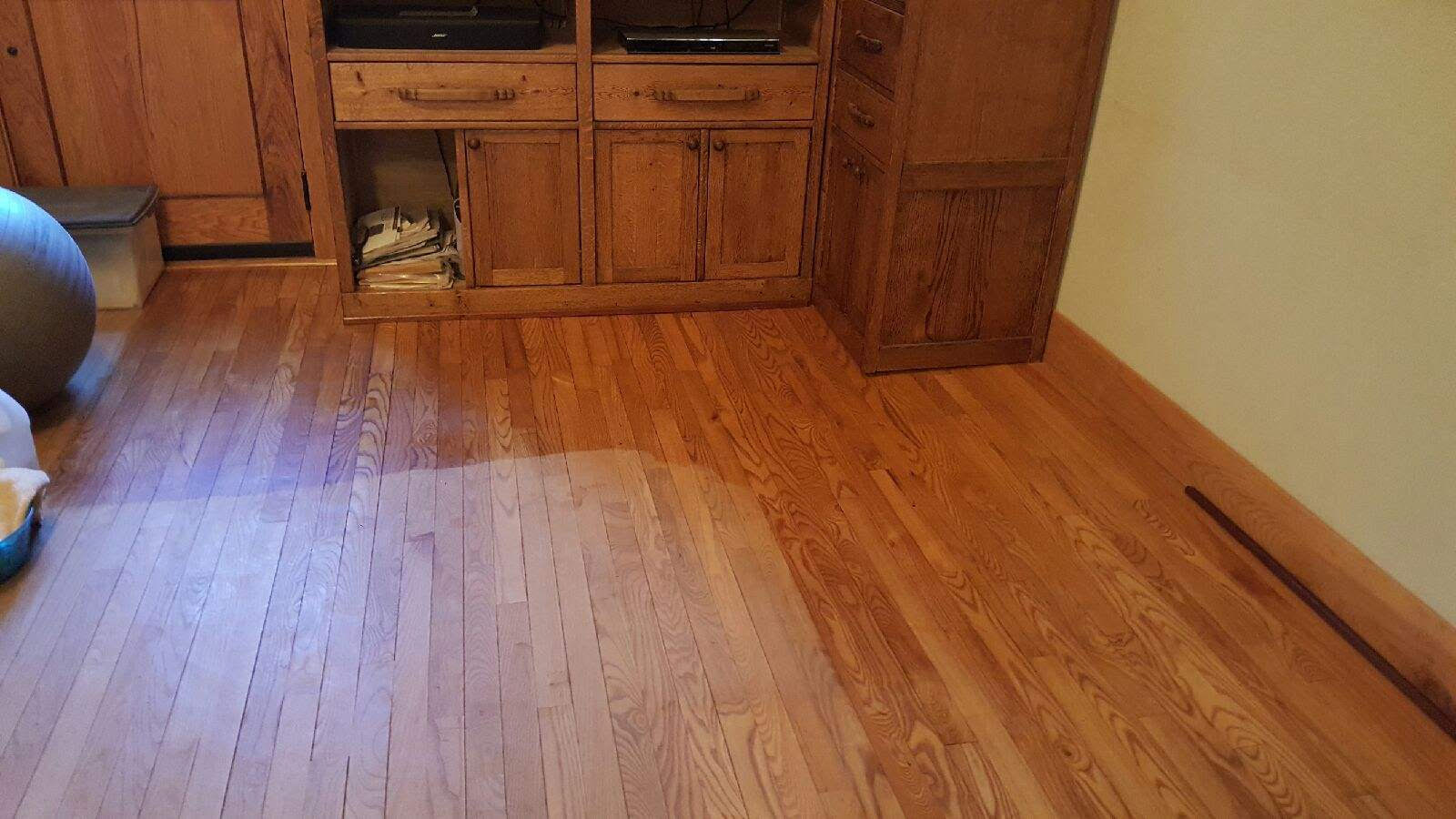
The portion on the right is dry and has been wiped down. The portion straight ahead I did this morning and the oil is soaking in and drying. Obviously the dull part on the left is the floor before I refinished it. I love this!
Question from Judy
Hi Debra,
Here is a natural way to refinish very old floors where much of the finish has worn off. We are doing it and I think it’s going to be great! Thought you would like it.
- Sweep floors
- Any greasy stains? Use WHITE VINEGAR. Scrub the stains in a circular motion with a sponge. Use the scrubbing side, but make sure you buy the ones that have the non-scratch scrubbing side. Let the vinegar dry. If stain is still visible, do it one more time. Let dry.
- Scrub the same stains with Dawn and hot water – in a circular motion. then with the grain. Let dry.
- Mop entire floor – we used Murphy’s Oil Soap and water. Let dry.
- With the soft side of a sponge, spread olive oil over entire floor. Let dry. This could take up to 24 hours. Then take a clean towel and wipe over entire floor (vigorously).
That’s it.
On one of our floors, I let the oil stay on for only about 6 hours, then used the towel, because we needed use of that floor! It still looks fine. We did all of this in December, and the floors still look great!
DON”T SLIP! FLOORS ARE VERY SLIPPERY UNTIL AFTER THE TOWEL IS USED!!!!
I’m doing it a little bit at a time, and there’s no lines where you stop and no smell, and it looks fabulous!
I found out about this because I’ve been wanting to refinish my floors but it was too expensive and I didn’t want the chemicals in my house. Then I went to the home of a friend for dinner who lives in an old house and her floors looked fabulous! I asked her what she did and she gave me the information. And now I’m doing mine and they look great too.
I’m so excited! I can’t wait to do the whole house.
Debra’s Answer
This sounds great. I need this for my floors too! I’m going to try it.
Rack for Sprouting Jars
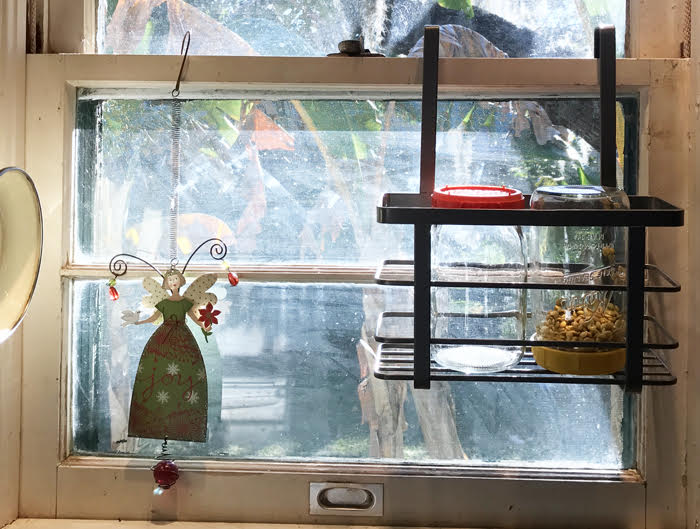
For years I have been wanting to grow sprouts at home, but didn’t because I couldn’t figure out where to put the jars that would:
- have enough light
- be near a water source
- be in a place where it’s OK to drip
- not get in the way of other things I’m doing
- be in a place where I would see them on a regular basis so I would remember to water them and could monitor their progress
Finally, yesterday I came across sprouting yet again and wanted to do it. But again ran into the question “where do I put the jars?”
You know that old saying. “Where there’s a will there’s a way.”
Well I decided I was going to figure out where to put the jars so I could sprout.
And then last night I went to Target to buy another half-gallon glass refrigerator pitcher and then decided to just walk around the store and see if I could find something that would hold the sprouting jars.
And I did! I found these metal baskets that I could hang in my kitchen window right over the sink and they are perfect in every way! They are designed to hang on a cabinet door to hold cleaning supplies, but I just used it for a different purpose. I would give you the link but this item doesn’t seem to be on the Target website. It might be in your local store.
Anyway, if this type of basket would be useful for you in some way, search for “cabinet basket” and you’ll find similar products.
The Greatest Danger to Firefighters Isn’t the Fire—It’s Cancer from Toxic Smoke

An article in this month’s Boston Magazine tells how chemicals released from the items in homes as they are burning are more deadly than the fire itself.
Today’s homes and offices are jam-packed with plastics, electronics, and furniture covered in flame-retardants. “When they combust,” Finn explains about household goods, “they are extremely toxic.” That means the smoke firefighters are exposed to is often loaded with a litany of septic chemicals—formaldehyde, vinyl chloride, chlorophenols, dioxins, trichloroethylene, ethylene oxide, polychlorinated biphenyls, methylene chloride, orthotoluidine, and arsenic, to name a few. Alone, any one of these may be harmful; mixed together they could make a potent cocktail of carcinogens with the capacity to do untold damage to the body’s organs, cells, and DNA.
It might seem odd that flame-retardants—ostensibly a firefighter’s best friend—would be a problem. They are, after all, designed to help slow the spread of fires or prevent them from starting in the first place. For decades, chemical mixtures were added to couches, mattresses, drapes, highchairs, cribs, televisions, computers, and countless other household items. But these chemical mixtures are not foolproof. They become ineffective at high temperatures, and when they go up in smoke they can take on the form of carcinogenic particles that are easy to inhale and capable of seeping through skin and into the bloodstream.
Read more at…
BOSTON MAGAZINE: Why Cancer Is Killing Boston’s Firefighters
Nontoxic Cat Box Cleaner
Question from Mary
Hi Debra,
I am looking for a toxic free way to clean the cat boxes. I have always used bleach to soak them in.
Debra’s Answer
I don’t have a cat. Readers, how do you clean your cat box in a nontoxic way?
Can Vitamins Protect You From Air Pollution?

A new study from the Mailman School of Public Health at Columbia University in New York, found that a combination of vitamins could help protect your health when exposed to high levels of fine particles in the air.
An international research team found that a combination of three B vitamins – folic acid, B6 and B12 – could strengthen the self-defence mechanism of genome molecules, which are prone to mutate when exposed to high levels of PM2.5 (respirable suspended particles with a diameter of 2.5 microns or less). In addition, these vitamins could help healthy adults offset the inflammatory and other symptoms of short-term exposure, especially if they came from an area low in pollution.
While no dosages have yet been given, researchers recommended eating more food rich in vitamin B when traveling to an area of high air pollution. Leafy green vegetables and beans which are rich in folic acid. Fish, beef liver and starchy vegetables are high in B6. And B12 requires eating animal products, such as fish, meat, eggs and milk.
This is the first test on living humans to suggest a remedy for genetic damage caused by smog.
Well known symptoms of smog exposure include chest pain, dizziness, headaches and heart disease. Smog has also been associated with an increased in death rates, damage to human brain cells and interfering with the way genes work.
More than 90 per cent of the world’s population live in places where the annual average PM2.5 level is worse than the 10mcg per cubic metre of air recommended by the World Health Organisation.
SOUTH CHINA MORNING POST: How vitamins can protect you from the damaging effects of air pollution
What’s a Miswak? And Why Should You Use It Instead of a Toothbrush?
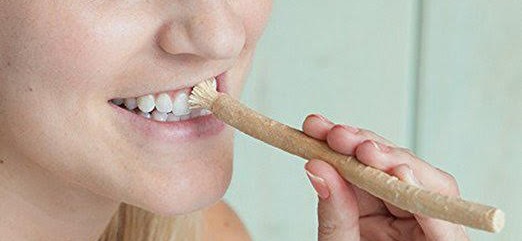
Almost two years ago I posted a link on Debra’s List for a miswak. I didn’t make a big deal out of it because it was the only one and the first of it’s kind and I hadn’t tried it.
“I still haven’t tried it, but suddenly this past week I became aware of three websites selling miswaks, and posted them as well, and there may be even more, and more coming. I think it’s time to get one and try this out.”
So I thought I’d better tell you what it is.
 A miswak is a natural “tooth-stick” made from a tree branch. Cut specifically from the tree ‘Salvadora persica’ it has a unique chemical composition that works exceptionally well to naturally clean and whiten teeth. It’s not a new thing. This is a traditional and natural alternative to the modern toothbrush, known to be in use for more than 7000 years and is still used today in Arabic countries, India, and parts of Africa.
A miswak is a natural “tooth-stick” made from a tree branch. Cut specifically from the tree ‘Salvadora persica’ it has a unique chemical composition that works exceptionally well to naturally clean and whiten teeth. It’s not a new thing. This is a traditional and natural alternative to the modern toothbrush, known to be in use for more than 7000 years and is still used today in Arabic countries, India, and parts of Africa.
The Journal of Health says, “It it has been found that if a miswak is used correcly, then it is more effective in reducing plaque and gum disease than that of a toothbrush due to its antibacterial properties and brushing action.”
It’s toothbrush, toothpaste, and tooth whitener all in one. It requires no water or toothpaste, so you can carry it with you and use it at any time.
These tooth-sticks are also free from chemicals and pesticides. They are just sticks in their natural state. But very special sticks with unique characteristics that are perfect for our teeth.
I love products like this which provide a completely natural, non-industrial alternative to a common industrial product, and outperforms us. It just reaffirms my belief that everything we need to be healthy exists in Nature. We just need to find it and use it.
JOURNAL OF AYURVEDA AND INTEGRATIVE MEDICINE: Miswak: A Periodontist’s Perspective
WIKIPEDIA: Miswak
Scientific studies documented
THE SAUDI DENTAL JOURNAL: A Review on Miswak and it’s Effect on Various Aspects of Oral Health
Miswaks on Debra’s List
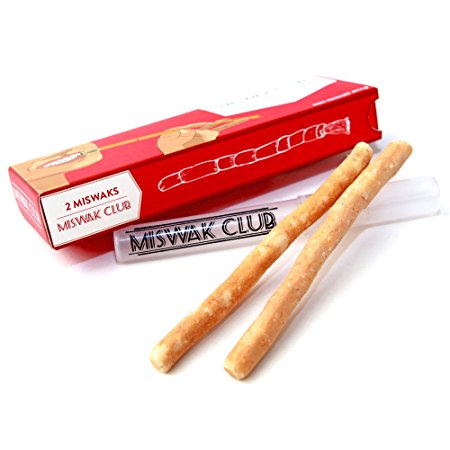
|
|
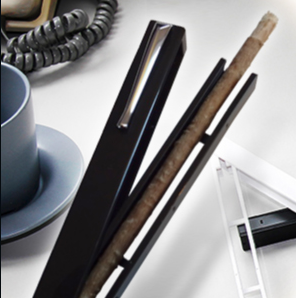
|
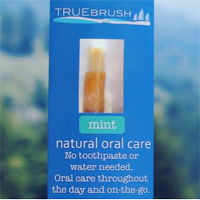
|

